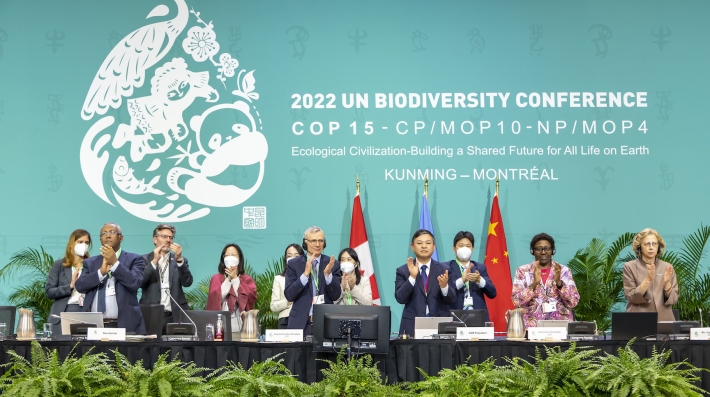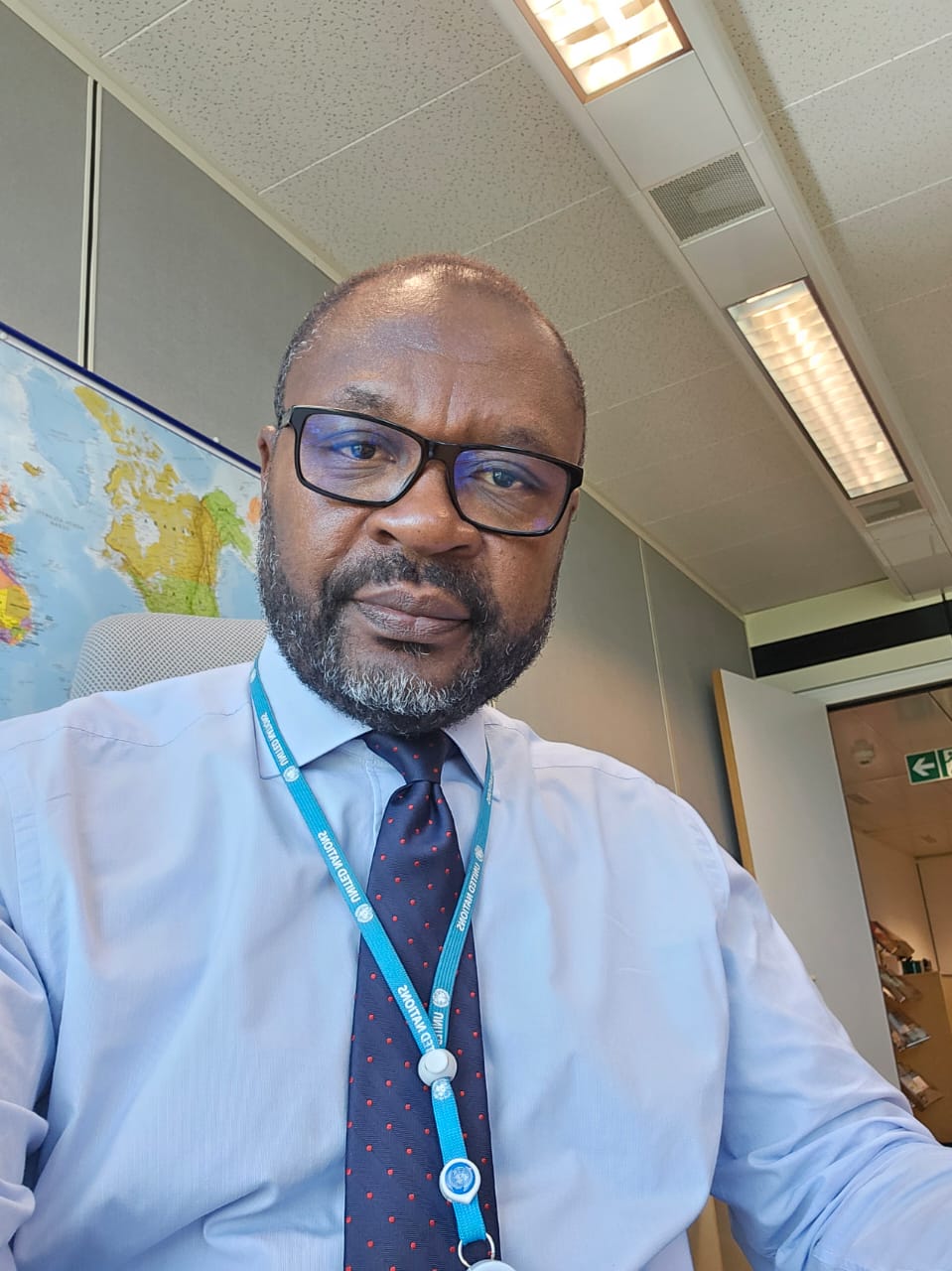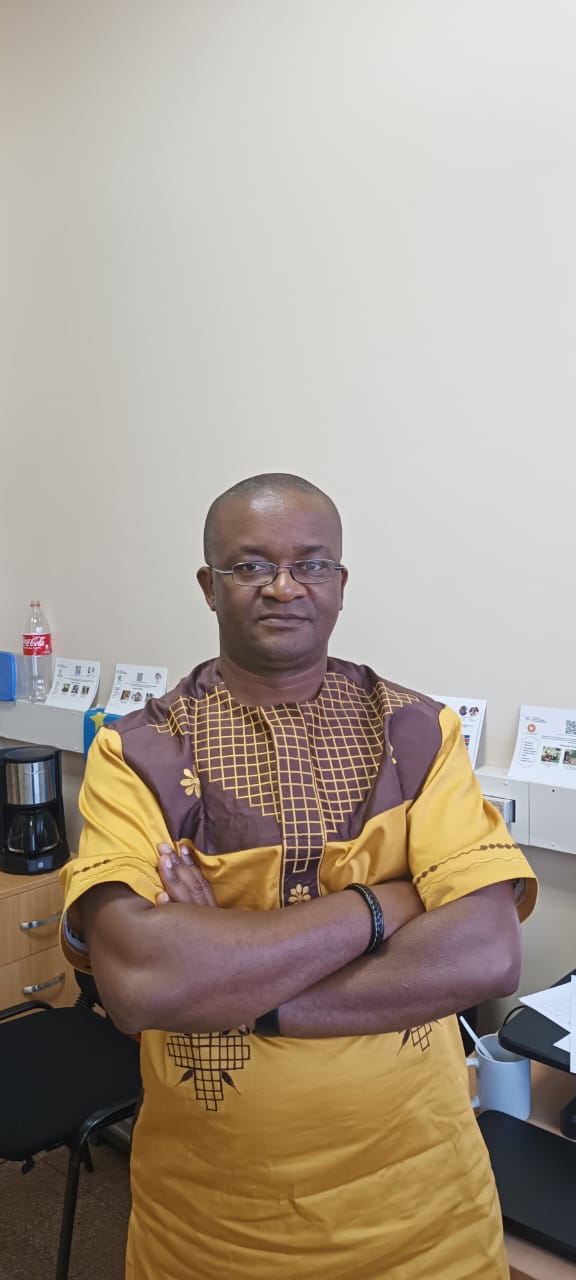Outcome of the Convention on Biodiversity’s Conference of Parties and its significance for Africa and the developing world

Cyrille-Lazare Siewe and Christian Keambou Tiambo
 Cyrille-Lazare Siewe
Cyrille-Lazare Siewe
Keep Reading
 Christian Keambou Tiambo
Christian Keambou Tiambo
The recent “People’s COP”, the Sixteen Conference of the Parties (COP) to the Convention on Biological Diversity (CBD) that ended on the 2nd of November in Cali (Colombia) was a historic moment for global biodiversity, with ambitious targets and financial commitments that was offering new hope for reversing ecological and biodiversity decline. For Africa—a continent blessed with unparalleled biodiversity but increasingly vulnerable to climate and socio-economic pressures—these outcomes were presenting both opportunities and significant challenges.
The outcomes of the hold considerable significance for the developing world. The decisions so far adopted at this conference not only represent a global commitment to addressing the urgent biodiversity crisis but also provide a framework for biodiversity-rich and developing nations to protect and restore biodiversity in ways that support sustainable development and social equity.
Despite all the energies invested by the negotiators, it was frustrating for many of them that a decision on Resource Mobilization was not adopted, but that should not shadow the fact that very important decisions were adopted toward the Goal of “Making Peace with Nature”
1. The Kunming-Montreal Global Biodiversity Framework (KMGBF)
At the heart of the COP16 outcomes is the Kunming-Montreal Global Biodiversity Framework (GBF), a bold plan aimed at halting biodiversity loss by 2030. The GBF establishes 23 targets, including the much-publicized “30×30” goal: to protect at least 30% of the world’s terrestrial and marine ecosystems by 2030. In Africa, where the relationship between people and nature is deeply intertwined, this target brings a mix of promise and complexity.
• The Promise of Protecting 30% of African Lands and Waters Ecosystems.
Africa is home to 17% of the world’s forest area, vast grasslands, and unique marine ecosystems, making it crucial to the global goal of protecting 30% of the planet’s ecosystems. The erosion of local and locally adapted livestock diversity poses an especially serious threat to developing countries, where livestock-keeping generates as much as 80 percent of agricultural GDP, providing much-needed food, fiber, fuel, and draught power. Achieving this target in Africa could mean a much-needed boost to conservation, safeguarding landscapes like the Congo Basin, the East African savannas, critical coral reefs and restoring the Arid and Semi-Arid Lands (ASALs) that bear an incredible biodiversity of locally adapted plants, livestock and wildlife. These ecosystems are not only globally significant but are also lifelines for countless communities of Indigenous people and local communities (IPLCs) who depend on those resources for their livelihoods.
“The planet doesn’t anymore have time to lose its biodiversity. Parties need to work hard in this COP to reach a consensus, without diminishing the rules and procedures at national and international levels”, said the incoming COP President, Mohammed Gonzalez during the Opening Plenary of the COP16.
• Significance for Developing Countries
For many developing nations, meeting the 30×30 target presents both a challenge and an opportunity. The framework provides global legitimacy for conservation and restoration efforts and would enable biodiversity-rich countries to attract more local and international funding and technical assistance. Protecting 30% of ecosystems could also boost eco-tourism, create jobs, and provide long-term ecosystem services that support livelihoods. However, implementing these goals will require significant support to avoid economic trade-offs and to ensure that the local community benefits.
COP-15, CP-MOP-10 and NP-MOP-4 decisions encouraged Parties when developing, updating or revising their National Biodiversity Strategies and Action Plans (NBSAPs), to take into account the lessons from the review of progress towards the implementation of the Convention and the Strategic Plan for Biodiversity 2011–2020 at national and global level, as well as information contained in the 5th edition of the Global Biodiversity Outlook. The Kunming-Montreal Global Biodiversity Framework is action- and results-oriented and aims to guide and promote, at all levels, the revision, development, updating, and implementation of policies, goals, targets, and national inclusive biodiversity strategies and action plans, and to facilitate the monitoring and review of progress at all levels, more transparently and responsibly, toward the Goal of “Making Peace with Nature”.
However, reaching this target without revised and inclusive NBSAPs and clear guidelines for sustainable land use could inadvertently impact communities that depend on these lands for agriculture, grazing, and sustenance. For the 30×30 target to truly benefit Africa, it must be implemented with sensitivity toward the continent’s socio-economic realities, ensuring that conservation and restoration efforts do not exclude any component of the biodiversity and local ecosystems, nor marginalize Indigenous and local communities.
2. Increased Financial Resources for Biodiversity Conservation
One of the most celebrated outcomes of the COP was the commitment to significantly increase financial flows to biodiversity initiatives in developing countries, including a pledge to mobilize $200 billion per year by 2030. This financial lifeline is a welcome relief for African nations, which have often been forced to choose between conservation and economic development due to limited resources.
The establishment of a new fund within the Global Environment Facility (GEF) is a significant step in acknowledging that Africa and other developing regions need substantial support to protect and restore biodiversity without compromising development and the well-being of their populations.
If African countries can access these funds efficiently, it could mean strengthened conservation infrastructure, improved capacity to manage protected areas, and enhanced programs to restore degraded ecosystems, including local and Indigenous livestock, wildlife, and non-conventional species of crops and livestock. For Africa, financial commitment from wealthier nations isn’t just a necessity—it’s a matter of fairness, equity, and justice, acknowledging that those who have historically contributed the least to biodiversity loss bear the greatest impact.
• A Financial Lifeline for African Biodiversity
Wealthier countries committed to mobilizing $200 billion per year by 2030 to fund biodiversity initiatives globally. COP16 adopted a decision to establish the “Cali Fund”, where companies making revenue or benefit from the use of Digital Sequence Information (DSI) will contribute to advance conservation and restoration actions. From the agreement at COP 15 to establish a multilateral mechanism with a global fund, and to share the benefits from the uses of digital sequence information on genetic resources (DSI) more fairly and equitably, delegates at COP 16 advanced its operationalization. This decision is however still complex enough to clarify how pharmaceutical, biotechnology, animal and plant breeding, and other industries benefiting from DSI should share those benefits with developing countries Indigenous Peoples and local communities.
• Significance for Developing Countries
Many developing nations lack the resources to fund large-scale biodiversity projects, and financial constraints often mean that conservation takes a backseat to economic development. Increased financial commitments will help developing countries protect critical ecosystems without sacrificing socio-economic goals. The additional funding could support the creation of protected areas, research on new methodologies for effective conservation and de-extinction projects, the creation of a continental database and networking national and regional genebanks and databanks, and community-driven conservation initiatives, making biodiversity protection more feasible and sustainable.
3. Recognition of Indigenous Peoples and Local Communities (IPLCs)
The COP acknowledged the essential role that Indigenous Peoples and Local Communities play in conservation, advocating for their inclusion in decision-making and respect for their traditional knowledge. This recognition is particularly significant for Africa, where communities have stewarded the land for generations through traditional practices. By integrating Indigenous knowledge, Africa has an opportunity to shape a conservation model that respects and utilizes the wisdom of local communities while empowering them in decision-making processes.
• Significance for Developing Countries
Many developing nations are home to diverse Indigenous and local communities who have managed their ecosystems for generations. Recognizing their role in biodiversity conservation strengthens these communities’ land rights and provides a pathway for sustainable livelihoods. By supporting Indigenous-led conservation, developing countries can achieve conservation goals while preserving cultural heritage and promoting social equity. This move could be transformative if African governments finalized their new NBSAPs including all components of biodiversity assets, and took concrete steps to respect land rights and actively involve Indigenous communities. Such inclusivity not only ensures that conservation practices are rooted in local reality but also strengthens resilience by drawing on time-tested, sustainable practices.
• Sustainable Use of Biodiversity: A Balancing Act for Africa’s Economies
One of the KMGBF’s key focuses is on the sustainable use of biodiversity, a principle that speaks directly to Africa’s need for a balanced approach. Africa’s economies are heavily reliant on natural resources—agriculture, livestock production, fisheries, mining, and forestry. While these sectors are vital to the continent’s economic growth, they also pose risks to biodiversity if not managed sustainably.
To truly capitalize on the KMGBF’s emphasis on sustainable use, African governments must adopt policies that balance economic development with conservation and restoration. By promoting sustainable crop, livestock, and fisheries production, responsible mining, and agroforestry, Africa can leverage its natural wealth to lift millions out of poverty without compromising its ecosystems. This transition will be challenging, but it’s necessary to build resilience against climate impacts and to safeguard food security for future generations.
4. Focus on Sustainable Use of Biodiversity
• Biodiversity Mainstreaming: A Path to Resilient Development
The COP16 also underscored the importance of mainstreaming biodiversity considerations across all sectors—from infrastructure to tourism. For Africa, biodiversity mainstreaming offers a promising path to build resilience against environmental shocks and to promote more sustainable growth models. Africa’s infrastructure projects, for example, can no longer afford to disregard the environment. Roads, dams, and urban expansion must incorporate biodiversity-friendly designs, protecting ecosystems while promoting development. Mainstreaming biodiversity can also reinforce Africa’s ecotourism sector, which has the potential to generate revenue, create jobs, and fund conservation. However, to achieve this, governments need to develop policies that integrate biodiversity goals across sectors, creating a synergy between environmental and economic policies.
The KMGBF promotes the sustainable use of biodiversity to balance environmental conservation with economic needs, aiming to reduce overexploitation and degradation.
• Significance for Developing Countries
Developing nations often rely heavily on natural resources for economic development, from agriculture, livestock, and fisheries to forestry and mining. The framework’s focus on sustainable use encourages practices that protect biodiversity while allowing communities to derive economic benefits. This focus helps developing countries avoid environmental degradation while building resilient economies, particularly in sectors where local communities depend directly on natural resources.
5. Biodiversity Mainstreaming Across All Sectors
The KMGBF emphasizes the need to integrate biodiversity considerations into other sectors, such as agriculture (crop and livestock, including non-conventional species), infrastructure, and urban planning. By mainstreaming biodiversity into all areas of policy and development planning, developing countries can promote more sustainable growth models. This approach helps balance biodiversity goals with other economic priorities, creating a synergy between environmental and economic development. Mainstreaming biodiversity can also prevent resource conflicts, improve food security, and enhance resilience to climate change.
6. Pollution Reduction and Climate-Biodiversity Synergies
Pollution and climate change are major challenges that disproportionately impact developing nations. The KMGBF calls for significant reductions in pollution, including plastic waste and pesticide use, as well as greater synergy between biodiversity and climate action. The framework’s emphasis on reducing pollution aligns with public health goals and enhances climate resilience. By encouraging actions that benefit both biodiversity and climate, developing countries can better protect their natural resources and communities, especially in areas where environmental degradation directly impacts health and livelihoods.
• A Path Toward Inclusive and Sustainable Development
The outcomes of the CBD COP16 offer a promising framework for biodiversity protection that resonates with the realities and needs of the developing world. For developing nations, this framework provides several opportunities to foster the SDGs:
– Access to Resources, Capacity Development, and Capacity Building: With more financial support, developing countries can invest in protected areas, restoration projects, and community conservation initiatives. Capacity Development and Capacity-building initiatives can further equip them to innovatively manage biodiversity effectively.
– Equity and Social Inclusion: Recognition of Indigenous rights and the role of local communities foster social inclusion and respect traditional practices, creating conservation models that are equitable and sustainable.
– Economic and Environmental Balance: By promoting sustainable use and mainstreaming biodiversity into economic planning, the framework helps developing nations protect ecosystems without stifling economic growth. Sustainable practices support long-term development and reduce vulnerability to climate shocks through climate-smart actions.
The Road Ahead: Turning Targets into Tangible Change
The CBD COP16 signals an encouraging shift towards more inclusive and ambitious conservation, restorations and sustainable utilization goals. However, the road ahead for Africa will be challenging.
Success will depend on securing adequate and accessible financing, involving local communities in conservation efforts, and creating policies that balance conservation with socio-economic growth.
The framework is there, but Africa’s leaders must now navigate these commitments with vision and pragmatism. Implementing these targets effectively will require tailored approaches that reflect Africa’s unique context. We need policies that don’t just chase global targets but prioritize all of Africa’s biodiversity assets, protect the rights of its people, and set a sustainable course for the future.
The implementation will also require robust governance, transparent use of funds, and policies that prioritize both conservation and socio-economic needs. Additionally, developing countries must have a seat at the table in international discussions to ensure that funding flows fairly and equitably, and policy frameworks meet their specific needs.
In essence, the CBD COP outcomes create a blueprint for sustainable development that acknowledges the unique challenges and potential of the developing world. This framework, if adequately funded and equitably implemented, provides a pathway toward a future where biodiversity conservation complements economic growth, supports communities, and helps build resilience in the face of global environmental crises.
For developing countries, these outcomes mark a critical step toward a more balanced, inclusive, and sustainable future.
With the right support, Africa can lead by example in achieving the CBD’s ambitious goals. But to make these COP16 outcomes truly meaningful, African nations will need more than pledges—they will need concrete support, political will, and an unwavering commitment to a future where people and nature thrive together. This is Africa’s moment to demonstrate that it is not only the custodian of biodiversity but also a model of sustainable development for the world to follow.6
*Cyrille-Lazare Siewe, PhD
Regional Sub-programme Coordinator, Science and Policy
Europe Office, UN Environment Programme (UNEP)
**Christian Keambou Tiambo, PhD
Co-Lead of the Cellular Resource, Functional Genomics and Biotechnology
ABS-Nagoya Protocol Officer
Centre for Tropical Livestock Genetics and Health (CTLGH) – International Livestock Research Institute
(ILRI)
Views, thoughts, and opinions expressed in the text belong solely to the authors, and not necessarily to the author’s employers, organizations, committees, or other groups or individuals.




